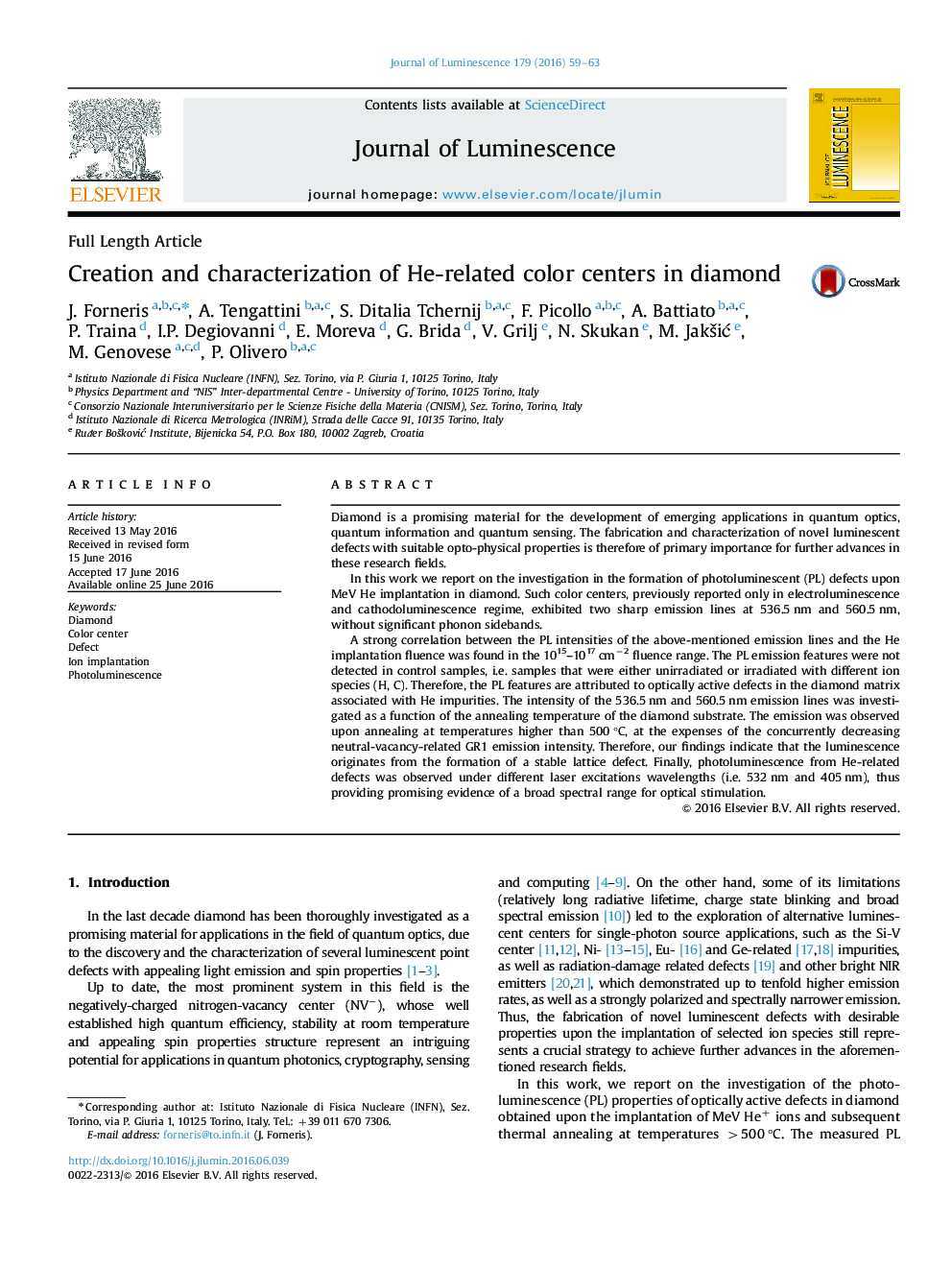| Article ID | Journal | Published Year | Pages | File Type |
|---|---|---|---|---|
| 5398296 | Journal of Luminescence | 2016 | 5 Pages |
Abstract
A strong correlation between the PL intensities of the above-mentioned emission lines and the He implantation fluence was found in the 1015-1017 cmâ2 fluence range. The PL emission features were not detected in control samples, i.e. samples that were either unirradiated or irradiated with different ion species (H, C). Therefore, the PL features are attributed to optically active defects in the diamond matrix associated with He impurities. The intensity of the 536.5 nm and 560.5 nm emission lines was investigated as a function of the annealing temperature of the diamond substrate. The emission was observed upon annealing at temperatures higher than 500 °C, at the expenses of the concurrently decreasing neutral-vacancy-related GR1 emission intensity. Therefore, our findings indicate that the luminescence originates from the formation of a stable lattice defect. Finally, photoluminescence from He-related defects was observed under different laser excitations wavelengths (i.e. 532 nm and 405 nm), thus providing promising evidence of a broad spectral range for optical stimulation.
Related Topics
Physical Sciences and Engineering
Chemistry
Physical and Theoretical Chemistry
Authors
J. Forneris, A. Tengattini, S. Ditalia Tchernij, F. Picollo, A. Battiato, P. Traina, I.P. Degiovanni, E. Moreva, G. Brida, V. Grilj, N. Skukan, M. JakÅ¡iÄ, M. Genovese, P. Olivero,
